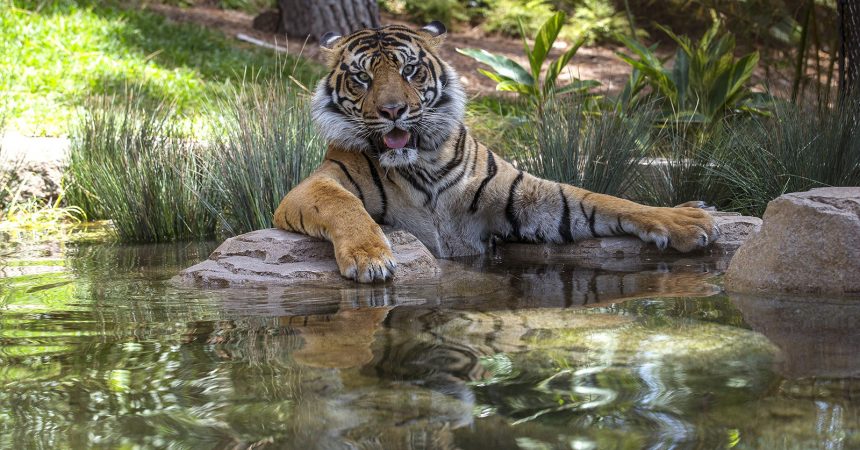It’s been a blistering summer across the globe. The slew of extreme temperatures includes north of the Arctic Circle in Finland catching 90 degrees Fahrenheit, to a community in Algeria breaking an Africa-wide record of 124 degrees. Even coastal San Diego has seen the mercury rise to unprecedented—and uncomfortable—levels. While excessive heat warnings, unstoppable wildfires, and years-long droughts may be the new normal, the fact remains that animals (including ourselves) need to regulate their body temperature. Both cold- and warm-blooded species have some clever behavioral, anatomical, or physiological tricks to survive extreme temperatures. Humans may seek out the beach, a frosty beverage, a fan, or a bowl of ice cream to cool down, but there are plenty of other cool strategies used by animals to grapple with the blazing dog days of summer.
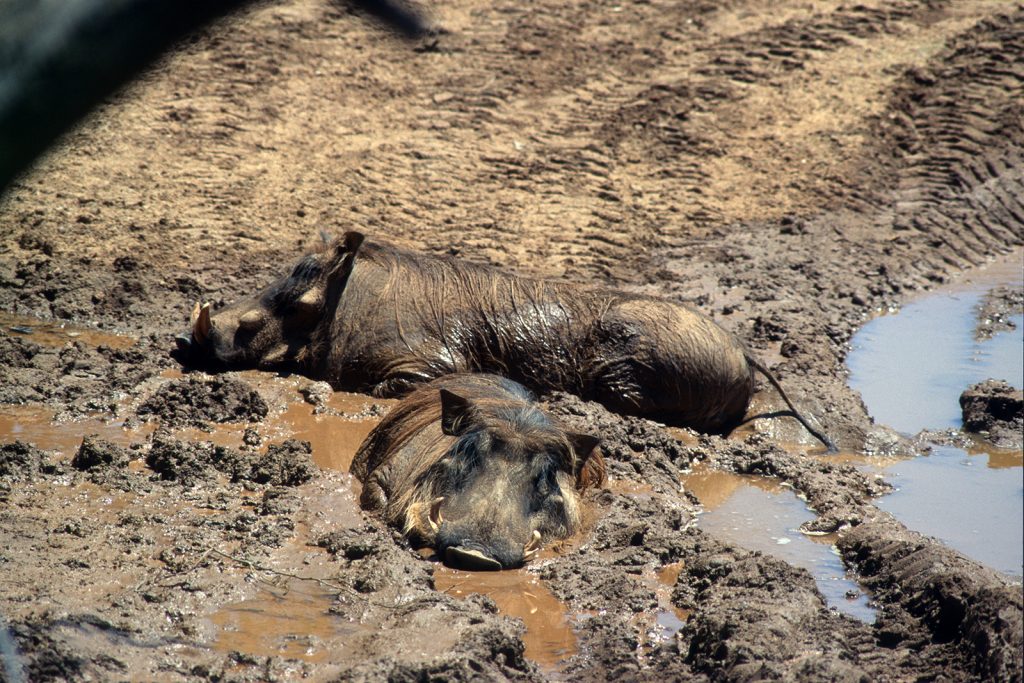
Hog Heaven: Sometimes a good wallow in the mud is the perfect remedy for a sizzling afternoon.
Chill Out
One favorite hot weather tactic is simply holing up in a nice, cool underground or shady spot to wait it out, a practice called estivating. Reptiles and amphibians are masters at this form of summer dormancy (some insects also partake), when temperatures soar and food sources plummet. Cold-blooded animals toast up with the ambient temperature, and do not squander energy on trying maintain a constant body temperature, so estivating is a sensible option. Few mammals opt for this strategy, tempting though it may be. Estivation serves to conserve energy in a big way while retaining water in the body and rationing the use of stored energy.
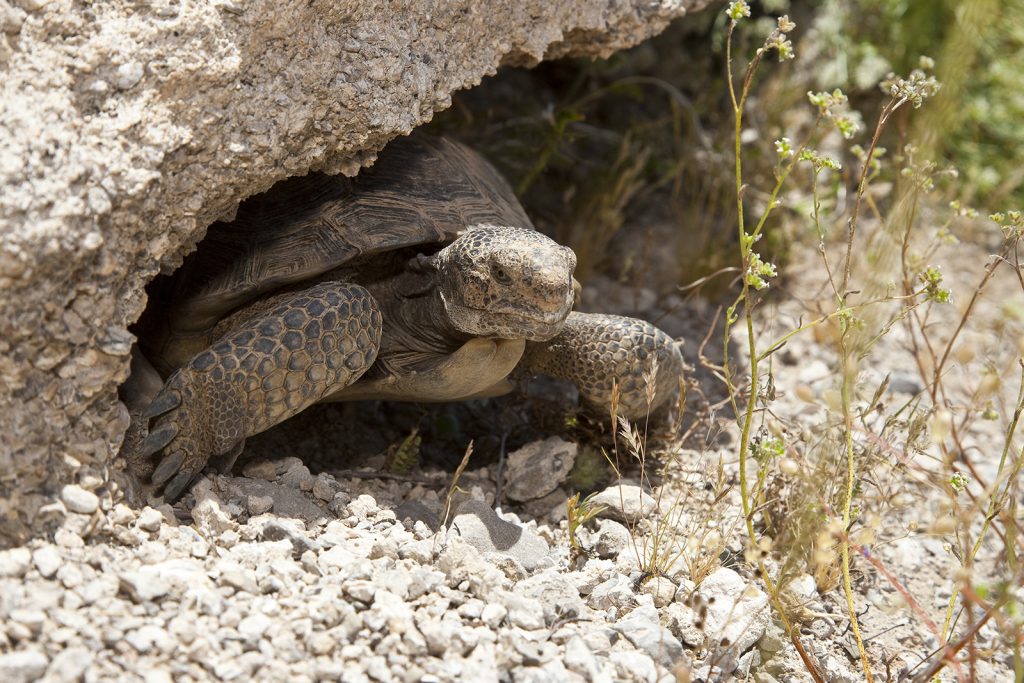
Can you dig it? The desert tortoise is well adapted physically and behaviorally to its often broiling habitat.
The built-to-survive desert tortoise species native to the Mojave and Sonoran deserts have a cascade of adaptations in response to torrid temps, including digging burrows to escape the heat—a desert tortoise can spend up to 95 percent of its life “dug in.” They can also go for long periods without food or water; they store water in the bladder where it can be reused (don’t ask) and they urinate very little.
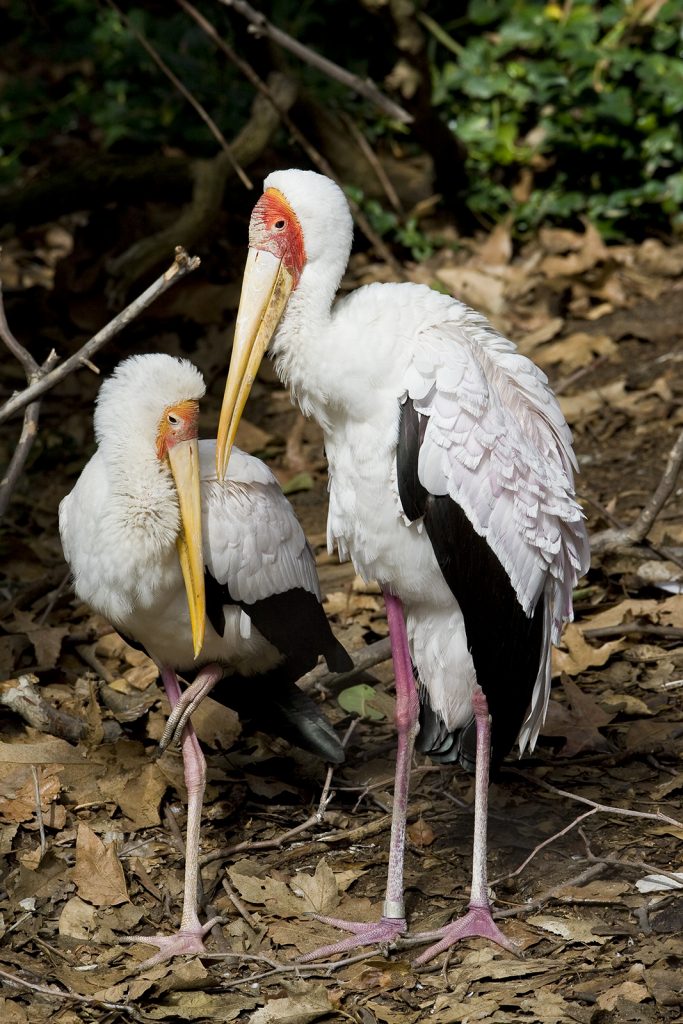
“No, really, you’re supposed to hit your legs with it.” A mother yellow-billed stork shows her youngster how to stay cool.
Speaking of urine, storks and some vulture species don’t waste a drop either. When the mercury soars, these birds also soar quite effortlessly on the thermals of cooler air. Back on terra firma, they excrete liquid waste (that white stuff that lands on your windshield) on their featherless legs, which cools them through evaporation. The cooled blood circulates back through its body, taking the sting out of the heat. This is called urohydrosis. Do not try this at home.
You may not think domestic cats and kangaroos have much in common besides fur, but alas, they both lick their front legs (or forearms) when they’re hot. The extra blood vessels right under the skin become cooled by the saliva (spit), helping to chill the blood as it recirculates, and presto, built-in AC!
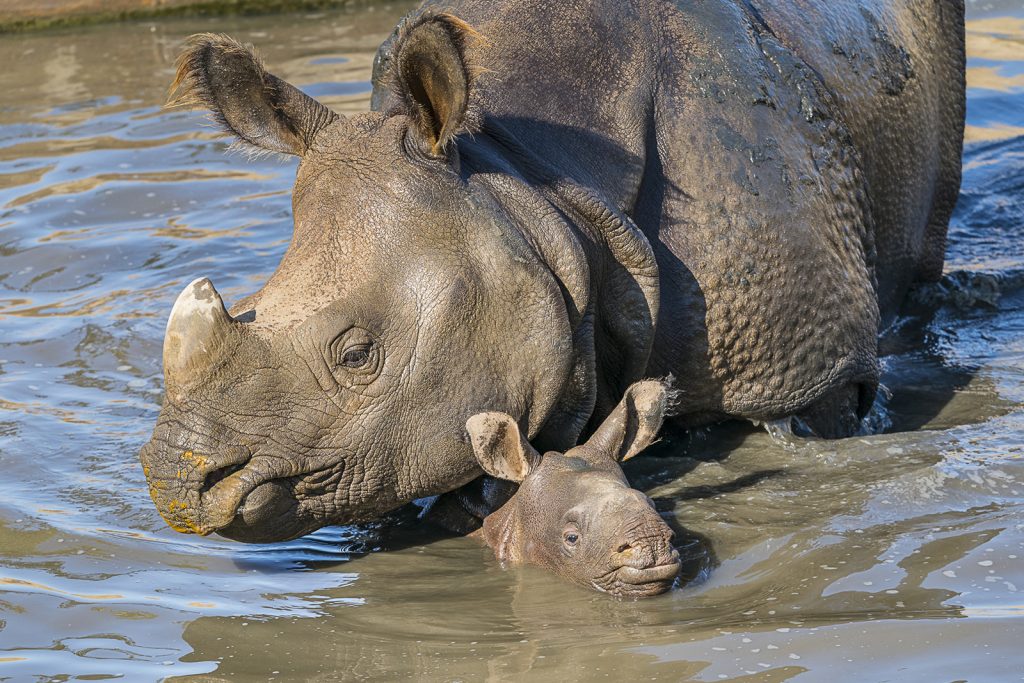
Wading Lessons: Cooling off is important for kids and calves!
But if you weigh several tons, who’s got time for licking to stay cool? Elephants and rhinoceroses totally cut to the chase and make a splash with their cooling off methods. In addition to bobbing about in a water source (that you can try at home!), or taking a good mud wallow, their uber-wrinkled skin increases the surface area that helps to cast off excess heat. And the elephants’ enormous ears are laden with veins and blood vessels. When a pachyderm flaps its ears, the blood gets downright chilly, and helps cool off the rest of its body. No wonder elephants are so cool!
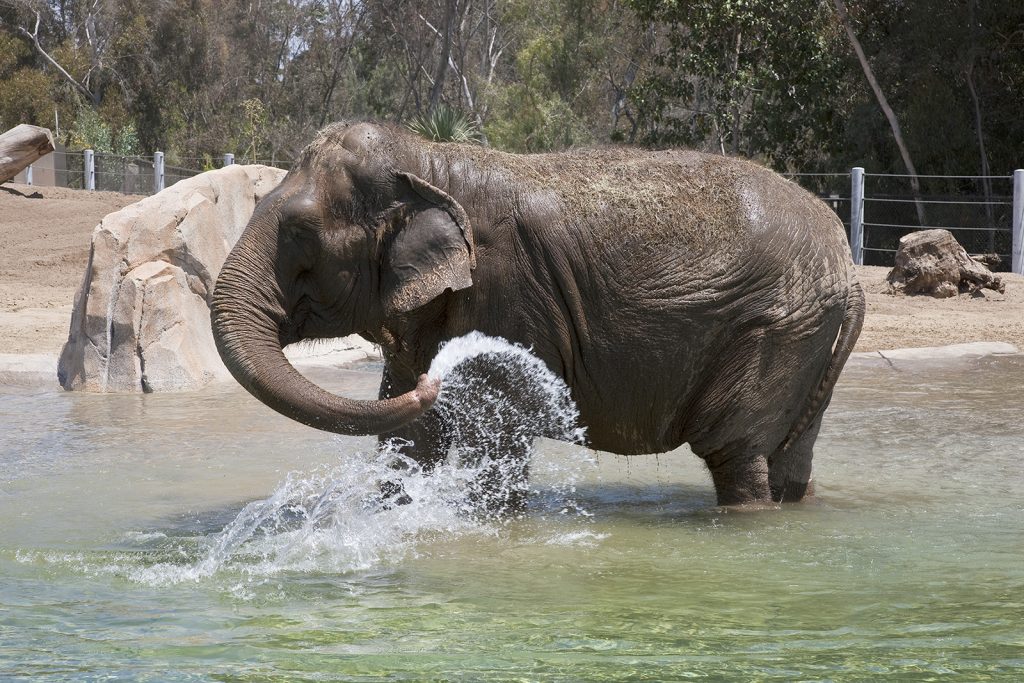
An elephant’s trunk is the perfect tool for hosing down or spreading mud to protect it from the sun.
Mouthing Off
Some creatures get rid of excess heat through their mouth. While a crocodile frozen-still with its mouth open might appear alarming, this gaping behavior allows its brain to chill through evaporative cooling, while the rest of its body warms. It is also a convincing behavioral display to fellow crocs!
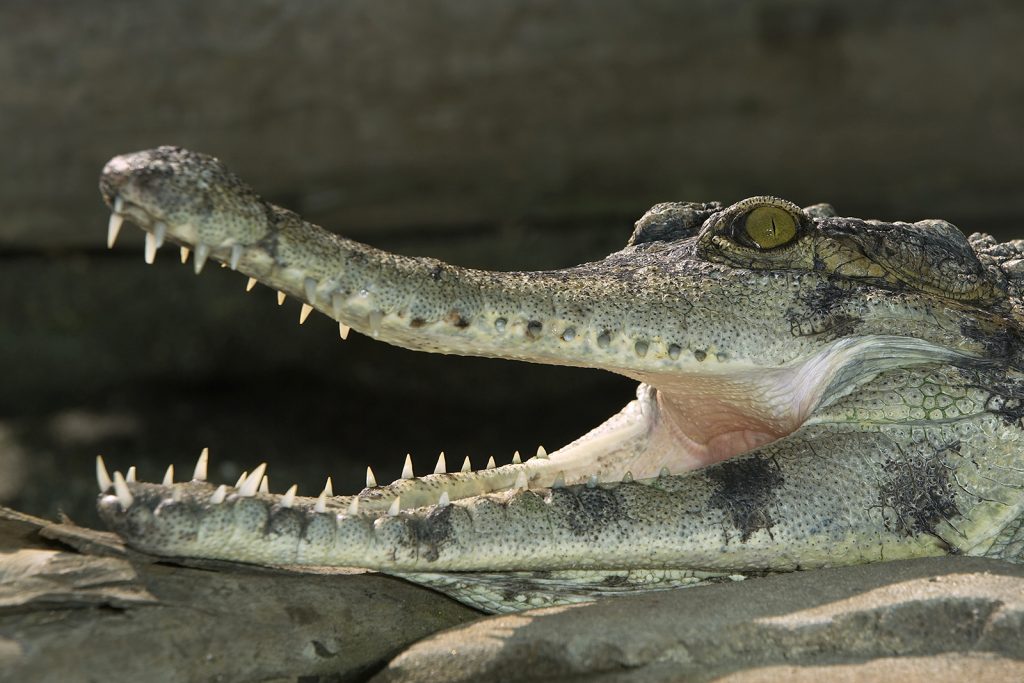
Frozen in Time: Gaping is a cooling-off behavior with function and flair.
If you see a cormorant looking like it’s at yodeling rehearsal, chances are it is practicing gular fluttering to cool off. By pumping air back and forth through their throat tissues, an efficient form of evaporative cooling, uh, transpires. So whether you’re sweating, panting, or gaping, you’re not alone in trying to stay cool. Just keep drinking lots of water and know that winter will soon arrive.
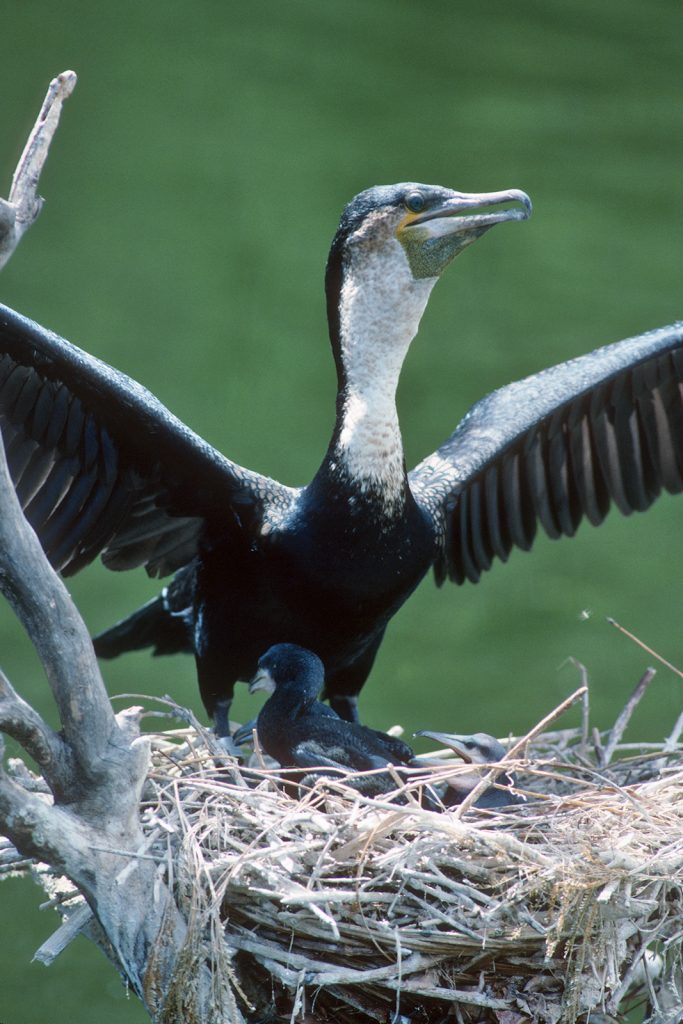
Double Duty: This white-breasted cormorant is throwing shade (the good kind) on her chicks while performing gular fluttering to keep herself cool. Cool!
Karyl Carmignani is a staff writer for San Diego Zoo Global. Read her previous blog, Super Animals, Super Heroes.

